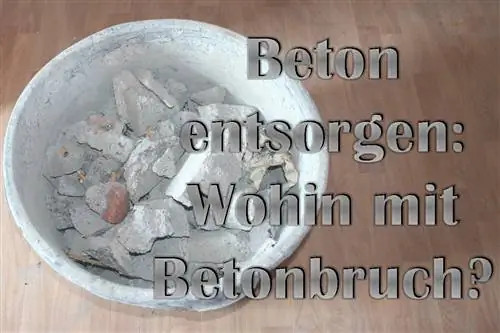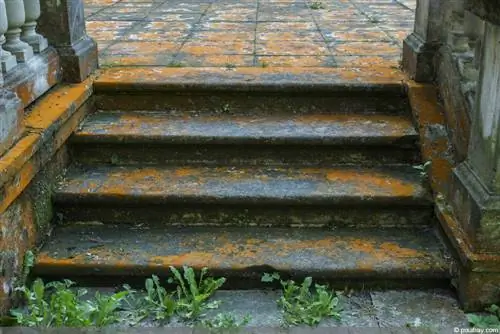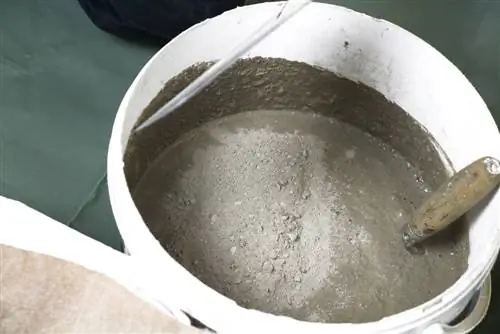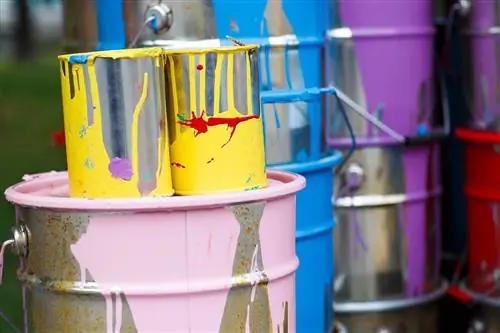- Author admin [email protected].
- Public 2023-12-17 03:39.
- Last modified 2025-01-24 12:45.
Concreting promises stability and durability. If the concrete is to be removed, it must be disposed of properly. This is not that easy, as not every type of concrete is declared as building rubble per se.
Concretes and broken concrete
Concretes are mineral building materials that are used in a variety of ways, such as for walls, as a foundation or as exposed aggregate concrete for the walkway in the garden. Strictly speaking, broken concrete is the collective term for concrete break-up and concrete demolition, whereby demolition material is used in road construction and demolition material is generated during conversion or demolition work on buildings and concrete products.
Note:
In colloquial language, the terms concrete breakage and concrete demolition are used synonymously.
Dispose of concrete
Since in many cases a component is not only made of concrete, but the building material is provided with fillers and stiffeners, a distinction is made when disposing of broken concrete according to the nature of the material:
- unreinforced / conventional concrete: no additives such as reinforcements or fillers
- reinforced/reinforced concrete types: provided with metal rods, structural steel mats or iron bars for reinforcement
- Types of concrete with plastics
- Types of concrete with toxic fibers such as asbestos
If you are unsure what type of concrete you are dealing with, you can have a concrete analysis carried out. If there is a risk of asbestos, you should definitely carry out a test for home users before starting work and wear protective clothing, safety glasses and a respiratory mask (at least FFP2 mask).
Note:
Aerated concrete, aerated concrete or Ytong are often referred to as concretes in colloquial language. However, disposal companies usually handle these materials separately from concrete demolition.
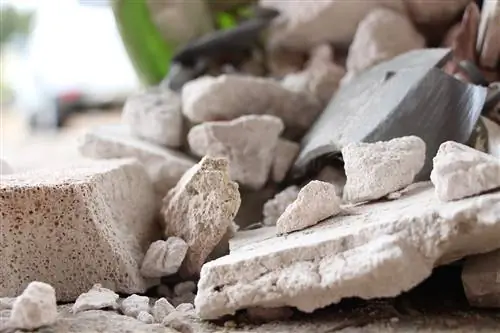
Unreinforced concrete
You can demolish concrete without fillers or steel reinforcements
- dispose of in a construction waste container or
- take it to the recycling center as pure building rubble.
When renting a waste container, you should make sure that you book a construction waste container for concrete demolition, as the material is recyclable and must therefore be disposed of separately from other waste. If you do not comply with the prescribed waste separation, the waste disposal company will have to sort the entire container, which leads to considerable additional costs.
Note:
Smaller amounts of demolished concrete can also be disposed of in the construction site mixed waste container. However, since the proportion can be a maximum of 15 percent, you should discuss this with the waste disposal company in advance.
Costs
The disposal costs are based on a rental container
- according to capacity (cubic meters),
- the rental period and
- the distance to the place of order and from there to the recycling center.
If the container is in a public area, costs for parking permits and no-parking signs will be added. Since the rental prices vary greatly, you should definitely compare the prices. With nationwide providers, this can be easily accomplished by entering your zip code on the waste disposal company's website. It is often worth making a telephone call to regional waste disposal companies.
Tip:
Some companies offer special rates when it comes to pure concrete demolition.
Generally speaking, a construction waste container costs
- three cubic meters between 85 and 125 euros per cubic meter
- five cubic meters between 50 and 88 euros per cubic meter
- seven cubic meters between 40 and 75 euros per cubic meter
If you have the option of disposing of the concrete demolition yourself at the recycling center, this will significantly reduce the costs. Because the recycling centers charge between three and five euros for ten liters.
Reinforced concrete types
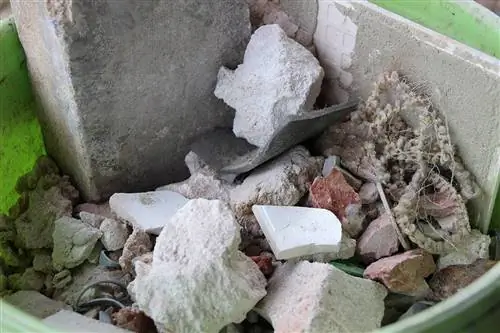
Compared to conventional concrete demolition, disposing of reinforced broken concrete is significantly more complicated because the reinforcement must be separated from the demolition by the disposal company. Since appropriate equipment is required for this, not every waste disposal company accepts reinforced material. Once you have overcome this hurdle, you should clarify the following questions in advance:
- Can reinforced and unreinforced demolition concrete be placed in the same (construction rubble) container?
- What is the maximum size (length x width x height) of a piece of reinforced concrete rubble?
- How thick can the reinforcement be?
Note:
Since disposal is more complex for the service provider, you usually have to expect higher costs.
Types of concrete with plastics
Concretes containing plastics are either landfilled or recycled. However, since their further processing is complex and cost-intensive, they are treated separately and are generally not classified as building rubble. You should therefore find out about costs and disposal in advance.
Types of concrete with toxic fibers
If concrete is demolished containing toxic fibers, the legal regulations for asbestos and toxic waste disposal apply. Therefore, the material may only be disposed of by certified companies that must take special precautions for removal, storage and transport to a hazardous waste landfill. The disposal costs are correspondingly high.
Note:
You must expect concrete structures containing asbestos if they are components that were built before the asbestos ban of 1993.

